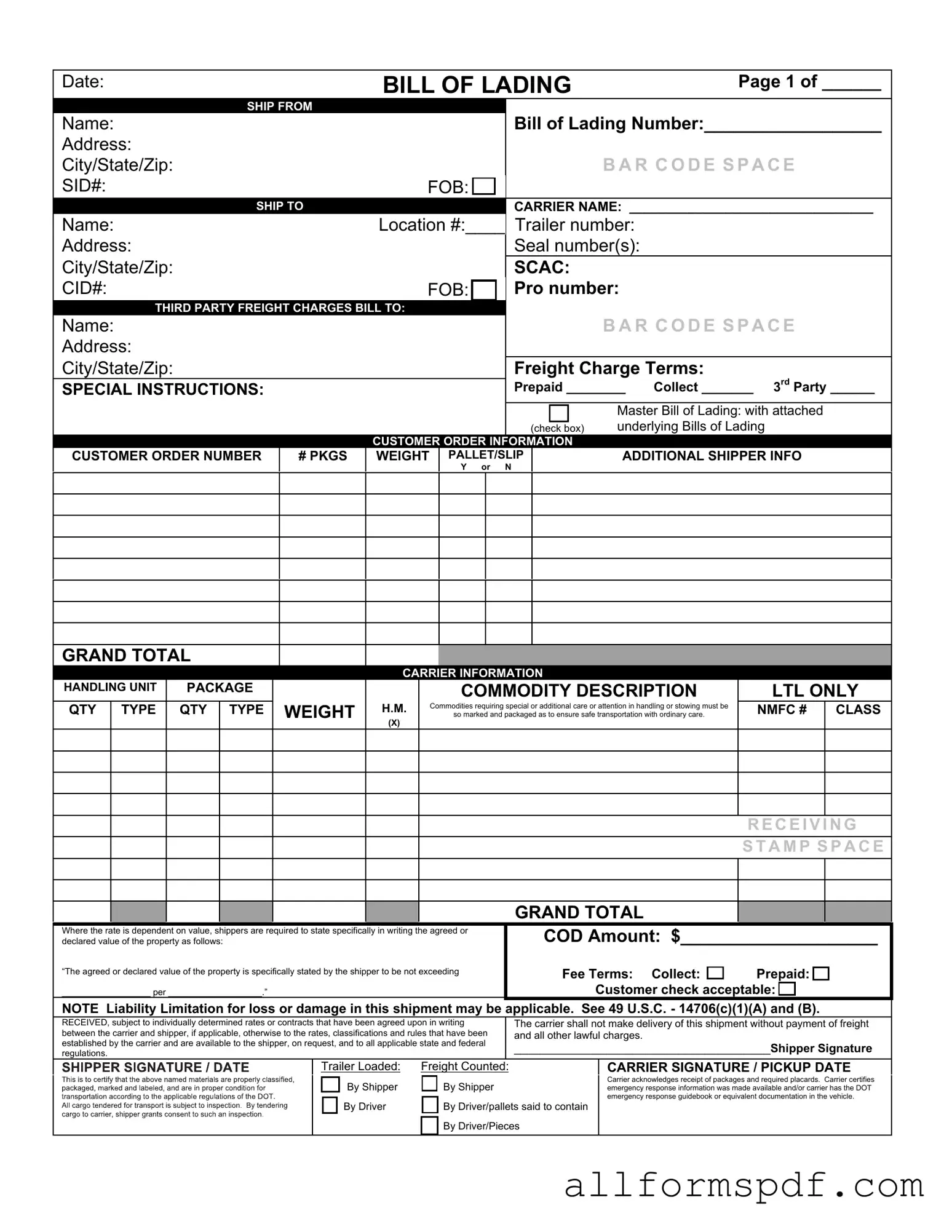Filling out a Bill of Lading with a Supplement form can be a straightforward process, but mistakes often occur. One common error is failing to include complete and accurate information about the shipment. This includes details such as the shipper's name, address, and contact information. Omitting any of these elements can lead to confusion or delays in the shipping process.
Another frequent mistake is not properly describing the goods being shipped. It’s essential to provide a clear and detailed description. Vague descriptions can lead to misinterpretations and complications during transit. For example, stating “furniture” instead of specifying “two wooden chairs and one oak table” can create issues for both the carrier and the recipient.
Many individuals also overlook the importance of documenting the weight and dimensions of the shipment accurately. Inaccurate measurements can result in additional charges or even refusal of the shipment. Always double-check these figures to ensure they reflect the actual size and weight of the goods.
Additionally, some people forget to include necessary special instructions or handling requirements. If a shipment needs to be handled with care, this information must be clearly stated. Failing to do so may lead to damage during transit, which can be costly and frustrating.
Another mistake is neglecting to sign and date the Bill of Lading. A signature is crucial as it signifies acceptance of the terms and conditions outlined in the document. Without it, the form may be considered incomplete, which can complicate the shipping process.
Misunderstanding the terms of liability is also a common error. Some individuals may not realize that the Bill of Lading serves as a contract between the shipper and the carrier. Knowing the terms of liability can help in understanding what is covered in case of loss or damage during transit.
Lastly, not keeping copies of the completed Bill of Lading with a Supplement form can be a significant oversight. Retaining copies is essential for tracking shipments and resolving any disputes that may arise. Always ensure that you have a record of the document for your files.
